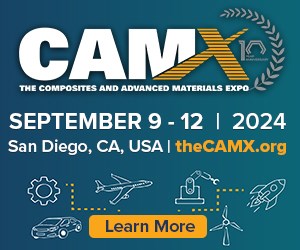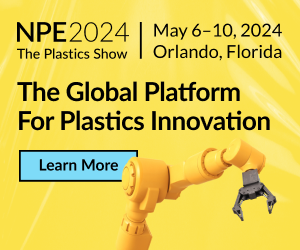Victrex Develops PAEK for Additive Manufacturing; Leads Consortium for Advancing AM Technologies
New generation materials rival earlier versions for both laser sintering and fusion filament fabrication processes.
Pioneer of PEEK Victrex (U.S. office in West Conshohocken, Penn.), has been developing materials for different additive manufacturing (AM) processes. The company leads a consortium of companies and institutions and was awarded funding from the U.K.’s agency for innovation, Innovate UK, in 2016 to carry out intensive pioneering R&D to advance AM technologies. The other members include Airbus Group Innovations, EOS, University of Exeter Center for Additive Layer Manufacturing, E3D-Online, HiETA Technologies, South West Metal Finishing, and 3T-RPD.
One key focus, in particular, is high-temperature, affordable polymer composites for AM aerospace applications. Victrex will present detailed technical results of its developmental PAEK materials at the bi-annual Additive Manufacturing conference of the University of Exeter Center for Additive Layer Manufacturing (CALM), in September 2018.
The first of these is a high-strength material in fine powder form for laser sintering (LS) which is said to attain lower refresh rates, resulting in improved recycling for unsintered powder. The second is a filament with a better strength than existing polyaryletherketone (PAEK) materials and better printability for fused filament fabrication processes (FFS/FDM).
Said Victrex CEO Jakob Sigurdsson, “These next-generation Victrex PAEK materials mark a decisive step forward, having potential to transform multiple applications, including aerospace and medical. The exciting progress is based on continued intense R&D at Victrex and excellent collaboration within the Victrex led consortium of companies and institutions pursuing innovation in additive manufacturing. Through this consortium we’re already seeing demonstrator parts that show how AM processes, coupled with high-performance materials, transform thinking to create truly innovative parts based on increased design possibilities.”
The PAEK incumbent materials on the market, although used in some AM applications, were designed for conventional manufacturing methods, such as machining and injection molding. As such, they have some features that are not optimal for AM processes. A first generation PAEK material for LS can only be recycled in a very low extent and required nearly full refresh of the printing bed with new powder, and PEEK filaments available for FFS have poor interlayer bonding, leading to a loss in Z-strength.
In contrast, the new developmental polymer grades have shown encouragingly low refresh rates (improves recycle for unsintered powder) with similar mechanical properties in LS, and in FFS good mechanical properties and printability. Said John Grasmeder, chief scientist at Victrex. The powder recycle work for laser sintering, using the new Victrex developmental polymer grades has gone very well, with no measurable loss of properties when test components were made from partially recycled powder. We believe it will be possible to reuse all of the non-sintered powder that is recovered after a build run. This will result in a significant reduction in material cost compared to current PAEK materials where up to 40% of the polymer is wasted and cannot be recycled.”
Meanwhile, the new Victrex PAEK filament and powder tie in with technologies developed by other members of this Innovate UK project. EOS has recently released a new automation-ready manufacturing platform for the LS process of plastics parts on an industrial scale (EOS P 500) with the capability to print high-performance polymers at high temperatures. Selected materials of the consortium are evaluated with the EOS P 500 platforms.
Victrex is planning to continue pre-commercial testing of a new PAEK filament product in conjunction with consortium partner E3D, who has recently commercially released a new water-cooled filament extruder head especially optimized for this new PAEK filament.
Related Content
Multi-material steel/composite leaf spring targets lightweight, high-volume applications
Rassini International was challenged by Ford Motor Co. to take weight out of the F-150 pickup truck. Rassini responded with a multi-material steel/composite hybrid leaf spring system that can be manufactured at high volumes.
Read MoreNovel dry tape for liquid molded composites
MTorres seeks to enable next-gen aircraft and open new markets for composites with low-cost, high-permeability tapes and versatile, high-speed production lines.
Read MoreInfinite Composites: Type V tanks for space, hydrogen, automotive and more
After a decade of proving its linerless, weight-saving composite tanks with NASA and more than 30 aerospace companies, this CryoSphere pioneer is scaling for growth in commercial space and sustainable transportation on Earth.
Read MorePrice, performance, protection: EV battery enclosures, Part 1
Composite technologies are growing in use as suppliers continue efforts to meet more demanding requirements for EV battery enclosures.
Read MoreRead Next
CW’s 2024 Top Shops survey offers new approach to benchmarking
Respondents that complete the survey by April 30, 2024, have the chance to be recognized as an honoree.
Read MoreFrom the CW Archives: The tale of the thermoplastic cryotank
In 2006, guest columnist Bob Hartunian related the story of his efforts two decades prior, while at McDonnell Douglas, to develop a thermoplastic composite crytank for hydrogen storage. He learned a lot of lessons.
Read MoreComposites end markets: Energy (2024)
Composites are used widely in oil/gas, wind and other renewable energy applications. Despite market challenges, growth potential and innovation for composites continue.
Read More
















